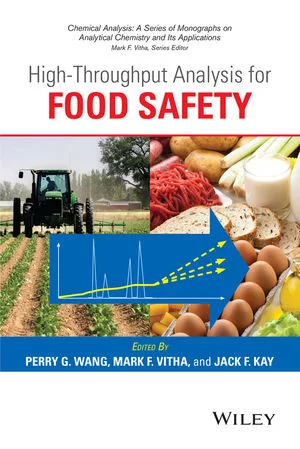No Compromise GC-MS - Atmospheric Pressure GC (APGC)
Pesticide residues are often high on the list of consumer concerns and consequently analytical laboratories are tasked with screening samples for as many pesticides as possible in a single analysis. Most countries have clearly defined regulations governing pesticide residue levels, for example Maximum Residue Limits (MRLs) for pesticide residues in food commodities. To ensure compliance analytical techniques that are sensitive, accurate, and robust are required. Multi-residue analysis can prove challenging due to the low limits of detection required to achieve MRL compliance for a diverse range of pesticides in a wide range of food commodities. With more than 1000 pesticides known to be in use, laboratories are under increasing pressure to increase the scope of the analytical methods for routine monitoring purposes.
Various technologies are used to meet this challenge, the most common being Liquid Chromatography (LC) and Gas Chromatography (GC) coupled to tandem quadrupole mass spectrometry. Implementation of these techniques allows the laboratory to cover a range of compounds with varying chemistries as required by legislation. In GC/MS/MS the traditional ionization mode used is Electron Impact (EI). This is a relatively “hard” ionization method and results in a high degree of analyte fragmentation, which compromises the selectivity and sensitivity of the MS/MS measurement. Atmospheric Pressure Gas Chromatography (APGC) is a “soft” ionization technique resulting in less fragmentation and subsequently increasing the sensitivity and selectivity of MS/MS methods.
The Waters APGC source is readily interchangeable with the electrospray (ESI) source enabling a single, high performance platform to be used for the analysis of both GC and LC-amenable pesticides. GC/MS is commonly applied for non-polar, volatile, and thermally stable compounds, and ionization in GC/MS normally occurs under vacuum conditions using either electron ionization (EI) or chemical ionization (CI). APGC operates at atmospheric pressure and its soft ionization process can provide abundant molecular ions that in most cases can be used as precursor ions in MRM experiments for multi-residue GC-MS/MS analysis.
Key features/benefits:
- Lower levels of fragmentation compared with traditional EI: Coupled with Waters' Xevo TQ MS or Xevo TQ-S, APGC enables low-level quantification of pesticide residues that have proved challenging to analyze using traditional EI+ GC-MS systems.
- Analyze both GC and LC compounds on a single MS platform: APGC enables users access to Waters high performance MS systems and class leading technologies such as RADAR, MSE and Ion Mobility Separations (IMS) that were previously unavailable. Changeover from LC to GC is fast and easy, with equilibration time between modes of operation kept to a minimum.
- Achieve ultra-trace detection levels using Xevo TQ-S tandem quadrupole MS with APGC. This allows compliance with regulatory limits and the ability to inject less sample matrix.
In this application note we describe the development and validation of a highly sensitive, multi-class method for the routine determination of 142 pesticide residues in QuEChERS extracts of various fruit and vegetables using APGC and Xevo TQ-S.
For more information on APGC, visit www.waters.com/apgc
By Jody Dunstan, BSc MSc CChem MRSC, Product Manager, GC/MS Waters Corporation
Looking for quick answers on food safety topics?
Try Ask FSM, our new smart AI search tool.
Ask FSM →





